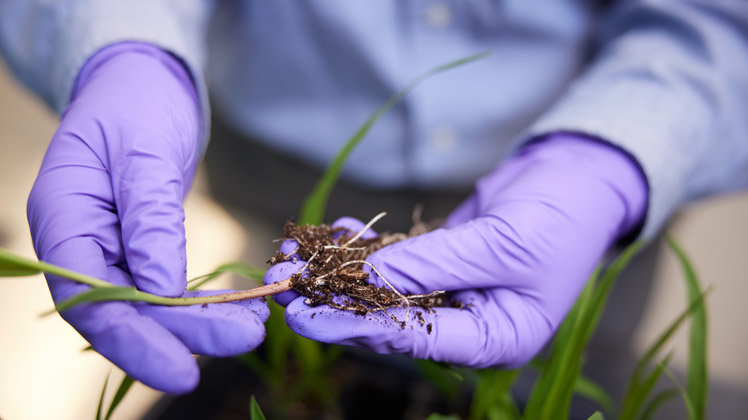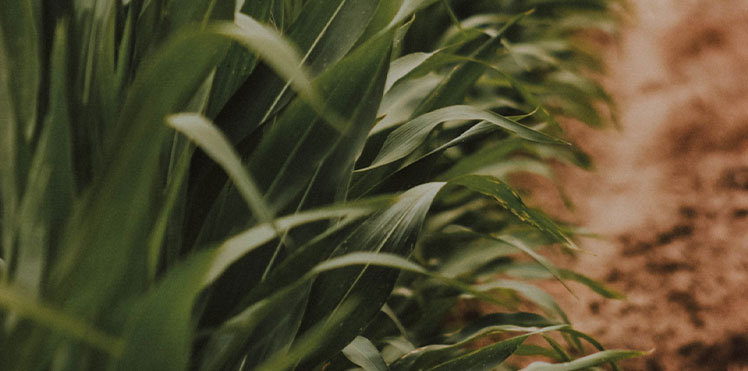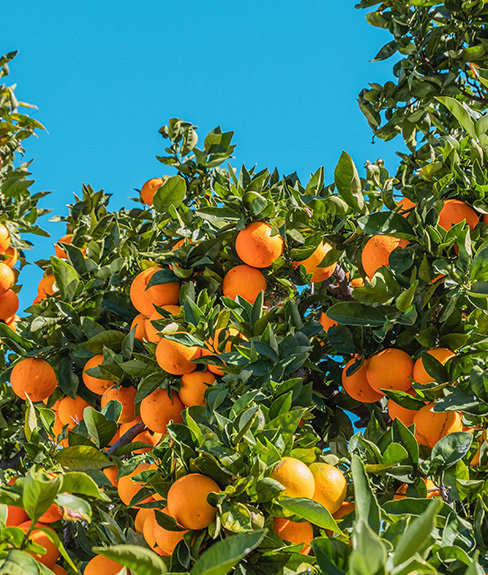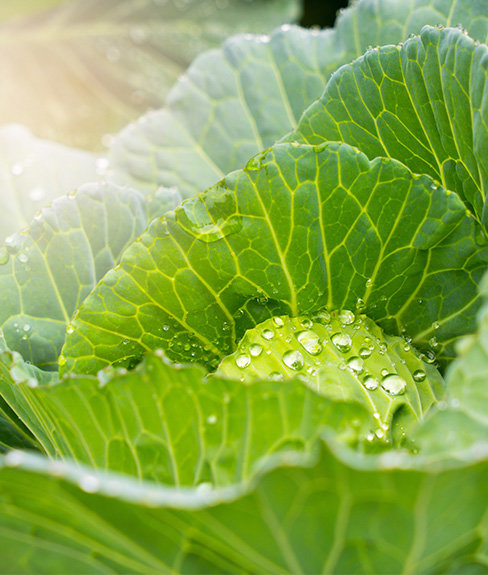Row crop health
Our solutions will provide more environmentally sound protection from insects and diseases to some of the most widely grown crops around the world.

Crop system health with our game-changing technologies
Row crops are among the most important crops in feeding the world’s population. Corn is the most produced crop globally with annual production of around 1.1 billion tons, followed by wheat with 760.9 million tons and rice with 756.7 million tons. Large-scale production of these crops requires vast amounts of pesticides to be sprayed regularly throughout the crops’ growth cycle to protect them from damaging insects and diseases.
We aim to support growers of row crops to reduce their need to spray broad-spectrum pesticides, which can be harmful to the ecosystem structure and function, soil, water and air quality as well as to farm workers. These chemicals can also leave residues in food and consumers are increasingly looking to farmers to adopt alternative methods.
We’re developing nature-derived bioactives and biological delivery systems that can be programmed to protect crop health through biological targeting of specific insects and diseases. We aim to use the minimum amount of active ingredient needed to protect the crop by making them more effective and efficient. Our solutions are designed to minimize residues in the crop, soil and water, and to avoid harm to beneficial insects and other elements of the crop ecosystem.
We see the potential to make an impact in a variety of row crops and are exploring a range of solutions to address the pests and diseases that affect them. Soybean rust, for example, is potentially one of the most significant diseases of soybean and can cause yield losses greater than 50 percent. One of our first solutions for row crops focuses on controlling corn rootworm. This destructive pest can now be found in most corn (maize) growing areas.

Corn rootworm devastates yields
Though both adult beetles and larvae feed on the corn plant, it’s root-feeding by larvae that causes the most harm. When the roots are damaged, water and nutrients are prevented from moving up the plant and yields are drastically reduced. Even corn plants with only moderately damaged roots become weaker and more susceptible to lodging – breaking of the stalk beneath the ear – which can reduce yields or even make harvesting impossible.
The corn rootworm has shown itself to be highly adaptable in overcoming conventional pest management methods. They can rapidly adapt to and resist repeated use of an insecticide, which means that farmers need to adopt an ever-changing combination of management methods and often need to spray more frequently.
The Invaio corn rootworm solution
We’re developing a corn rootworm solution using our proprietary biological delivery system that features Nature-derived Lipid nanoParticles (NLP) technology. These NLPs are versatile carriers that deliver active molecules for improving plant health and protecting plants from insects and diseases. Our NLP technology can deliver a range of bioactives and be designed to treat a specific plant heath need.
We have demonstrated the benefits of our technology and approach using molecules that are already registered for use on corn rootworm but that are currently used as a spray. We encapsulate them using our NLP technology, enabling easier uptake and better distribution within the plant, and aim to improve and extend the protection with significantly fewer treatments and in smaller doses. Once the plant has been protected, these NLPs quickly biodegrade.
Our corn rootworm solution will be delivered in-furrow rather than as a spray, and we aim to significantly reduce the chemical load needed to give the plant an adequate level of protection. This will significantly reduce pesticide and water use as well as the impact on the environment and our food system.
You might be interested in

Our first Invaio Citrus Health™ solution is for the treatment of citrus greening (HLB), a highly destructive disease that has devastated the Florida citrus industry.
Citrus health
At present some 40 percent of crops are lost to insects and diseases. Our nature-friendly approach to pest control will be a game-changer.
Find out more
